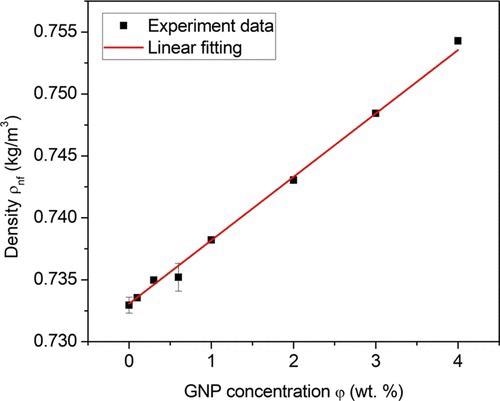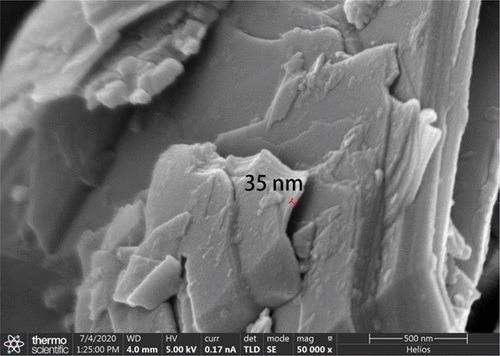In a study published recently in the journal ACS Omega, different physical and heat-transfer properties and evaporation characteristics of graphite/n-decane nanofluid fuels were discussed.

Study: Effect of Nanoparticle Concentration on Physical and Heat-Transfer Properties and Evaporation Characteristics of Graphite/n-Decane Nanofluid Fuels. Image Credit: Jaromir Chalabala/Shutterstock.com
What is n-decane?
N-decane has been regarded as a possible replacement propellant for aerospace kerosene in turbine engines and rocket engines.
As n-decane has strong thermal properties and can moderate saturation vapor pressure, it can satisfy huge quantities of energy demand while reducing CO2 emissions.
According to the studies, solitary n-decane molecules, as well as binary mixtures, might be employed as renewable energies. One technique for increasing the consumption effectiveness of n-decane is to dissolve nanoparticles (NPs) in n-decane to generate droplets, i.e., n-decane-based nanofluid lubricants.

Figure 1. Density of GNP/n-decane nanofluid fuels under different GNP concentrations (SP-80 of 0.5 vol %, 25 °C). © Li, S. et al. (2022).
Advantages of Nanofluid Biofuels
Nanofluid biofuels are a new breed of biofuels that work by floating nanoparticles (1100 nm) inside a base oil. They have shown promise in energy transfer and control systems for commercial processes such as vehicles (IC engines), electronic parts, nuclear plants, and electricity production.
These suspended nanoparticles may be divided into three categories: (1) ferrous nanoparticles (Al, for example); (2) brass nanoparticles (Al2O3, for example); and (3) carbon-based nanoparticles (graphite, etc.).
According to the research, dispersed nanoparticles significantly improve the vaporization and burning properties of base biofuels.
Importance of n-decane Based NPs
Despite having such a high fuel output, metal and metallic nanoparticles may clog burning processes and have a harmful impact on living beings.
Carbon-based nanoparticles are environmentally beneficial since only carbon dioxide is produced after burning.
The number of graphite nanoplatelets injected is crucial in determining the mechanical and thermal characteristics, the speed of temperature increase, as well as the degree of vaporization. Furthermore, as the vaporization of the hybrid nanofluid progresses, the graphite nanoplatelets concentration steadily rises.
In recent years, scientists have shown little interest in the relationship between nanoparticles content and the evaporation qualities of basic biofuels.
Despite this, the specific quantitative influence of adding nanoparticles to basic fuels on their evaporating ability has not yet been properly examined, nor has the process of improving their performance been clearly clarified.
Moreover, there has been little research into the mechanical and thermal properties of carbon-based nanofluid lubricants, nor has there been any comparison of these properties to those of basic biofuels.

Figure 2. SEM morphology of GNPs. © Li, S. et al. (2022).
Graphite Nanoplatelets in n-decane Loaded Solvents
The percentage of graphite nanoplatelets in n-decane loaded solvent SP-80 has a substantial impact on the durability, mechanical and thermal characteristics, as well as the evaporating features of the solvent mixture.
With a graphite nanoplatelets rate of 0.1 weight percent, the highest stability of GNP/n-decane nanofluid fuels was achieved. The highest surfactant SP-80 level was 0.5 vol percent, and the optimal ultrasonication period was 10 min.
Individual mechanical and thermal characteristics, including mass, friction coefficient, kinematic viscosity, heat capacity, specific heat, was influenced by the concentration of graphite nanoplatelets in a solution.
As the percentage of graphite nanoplatelets grows, the volume and heat transfer increase in a linear manner; the intensity increases in a binary manner, and the friction force has a piecewise effect on the volume.
The heating rate nearly always stays steady, whereas the heat of evaporation almost always decreases in proportion to time.
Research Findings and Conclusions
To achieve optimal evaporating effectiveness, a complete set of mechanical and thermal criteria that are connected to the concentration of nanoparticles must be satisfied.
It was observed that the evaporative cooling constants rise at reduced graphite nanoplatelets densities due to the fact that the movement duration of nanoparticles is two orders of magnitude shorter than that of the moisture removal period. In contrast, the vapor pressure constant declined with continually growing graphite nanoplatelets density due to the incorporation of granular shell structures on the surface of the liquid is observed.
As the proportion of graphite nanoplatelets increased from 1.75 weight percent, the evaporating reaction rate of GNP/ndecane nanofluids biofuels approached a peak, which was increased by 12.6 percent over the basic gasoline n-decane.
The enthalpy of vaporization was one of the most significant physiological and thermal qualities to consider since it had the greatest impact on the evaporating effectiveness of all of these characteristics.
The flowrate variable likewise had a linear association with the degree of the environmental warm air and were dependent on the composition of the surfactant SP-80.
Continue reading: Nanoporous Metals in Energy Technologies: An Overview
Reference
Li, S. et al. (2022). Effect of Nanoparticle Concentration on Physical and Heat-Transfer Properties and Evaporation Characteristics of Graphite/n-Decane Nanofluid Fuels. ACS Omega. Available at: https://pubs.acs.org/doi/10.1021/acsomega.1c05343
Disclaimer: The views expressed here are those of the author expressed in their private capacity and do not necessarily represent the views of AZoM.com Limited T/A AZoNetwork the owner and operator of this website. This disclaimer forms part of the Terms and conditions of use of this website.